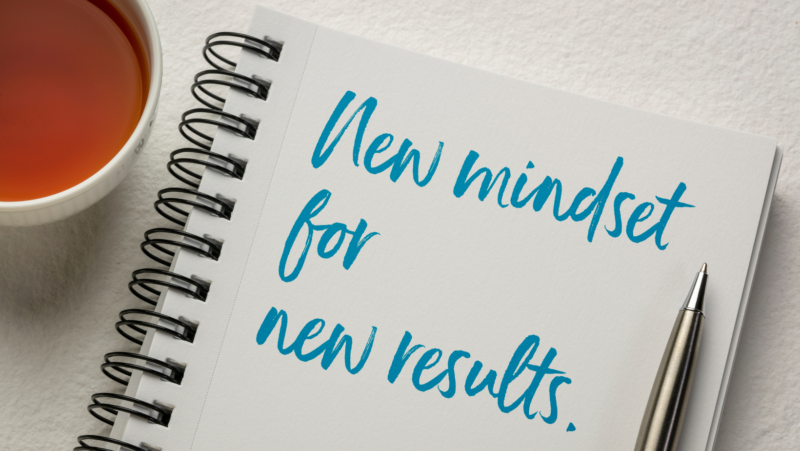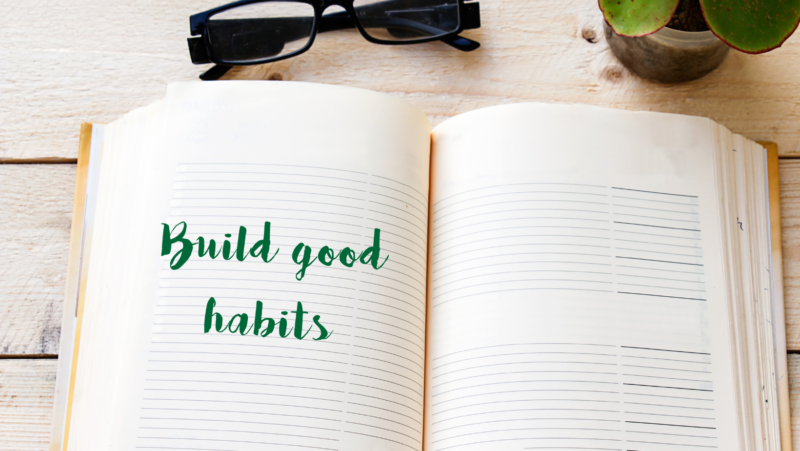Blog Short #130: Do you have the right mindset?

A book that changed my view of work, success, and intelligence when I first read it is Mindset: The New Psychology of Success by Carol Dweck.
Having a natural tendency toward perfectionism and learning to equate self-esteem with performance and achievement growing up, I recognized the “fixed mindset” to be alive and well in my psyche.
Luckily, after using the concepts in this book, I now embrace the “growth mindset” and am happy to say it’s a whole new world that’s much more enjoyable and productive.
Our Western culture tends toward the “fixed mindset” due to the heavy focus on performance, outcomes, and success. We like to see ourselves as winners. The only problem is that if we’re not winners, we fall to the bottom of the pack and see ourselves as losers. It’s an all-or-nothing mindset, and it’s the cause of a lot of emotional angst and depression.
Fortunately, the “growth mindset” is the antidote and oasis in the desert of perfectionism that I think you’ll love if you don’t already know about it.
Today I’m giving you a sketch of the two mindsets. This blog will be the first of three that provide a blueprint you can use to approach your work and goals while enhancing your personal growth and development at the same time.
Let’s start with some definitions. I’ll use the initials FM and GM throughout to make it easy.
Five Differences Between the Fixed and Growth Mindsets
1. Intelligence
FM sees intelligence, talent, and abilities as “fixed.” You either have it, or you don’t. You were born with it, and it can’t be changed or altered. You’re a genius, or you’re not.
GM views intelligence, talents, and abilities as malleable. You can alter, enhance, increase, and improve them with effort.
People do have inborn talents and proclivities, but without effort, they may never be expressed fully or tapped into. In contrast, someone with less inborn talent in a particular area may surpass the performance of someone with more natural talent through consistent effort, practice, and attendance.
Michael Jordan is a good example. People view him as having extraordinary talent, which he does, but he didn’t begin that way. It was through relentless hours of deliberate practice and improvement that he became the basketball virtuoso we all know.
2. Effort & Learning
FM sees effort as unfavorable because it means you’re not smart or talented. If you have to try, you don’t have it. You aren’t good enough. Instead of seeking to learn, you opt out of activities you can’t easily excel in.
GM embraces and values learning because it facilitates growth and improvement. Learning and effort help you reach your potential and are ongoing. After you reach one goal, you take on another. It’s a never-ending process of unfolding and redefining, and a source of pleasure and delight.
3. Failure & Setbacks
FM sees failure as an endpoint. If you fail or have a setback, you are the failure. As a result, you stick to activities you can do and do well. You lose interest in activities that challenge you and require more than one try because failing would topple your sense of self.
GM loves challenges. You see setbacks and failures as learning experiences and enjoy the challenge of figuring out what you need to do differently. You’re open to constructive criticism, being wrong, pivoting when new information is acquired, and considering new ideas that will result in growth and exploring your potential. Setbacks are stepping stones, not a measure of who you are.
4. Performance
FM is all about outcomes. You’re either a success or a failure, and everything that gets you there doesn’t matter—only the end result matters. The focus is on “perfect” performance. Every time. You have to prove yourself repeatedly.
It’s very anxiety-producing to need to stay on the pedestal. It’s as though you’re sitting on a platform surrounded by sharks in the water, and every move you make either keeps you on top or throws you to the sharks.
GM is about process. Process seeks to develop by embracing systems, setbacks, learning, and continued redefining of goals based on experience and analysis.
Outcomes are signposts along the way to let you know how you’re doing, but they have no finality. After you reach one signpost, you begin working toward the next. The process is itself rewarding because the mission is growth.
5. Self-Esteem
FM is excessively focused on maintaining self-esteem, and self-esteem is defined by performance.
You’re either good or bad, worthy or unworthy, a success or a failure. You need to be better than others to feel valuable.
You edge toward superiority and sometimes entitlement. Your method is competition and comparison, win-lose, up-down. When you fail, you either blame others or circumstances and look to compare yourself with those you see as inferior to you. You need to be perceived as “special” to feel okay.
GM is focused on continuing self-development. Self-esteem doesn’t fluctuate due to mistakes, setbacks, or failures. When experiencing an emotional slump, you seek more challenges to energize yourself and work through obstacles. You take action to confront problems and carry on with determination.
The emphasis on process rather than outcomes shows up in continued effort – not that outcomes aren’t important, but they aren’t the basis of self-esteem or self-image.
Self-esteem comes from living one’s values and pursuing growth.
The Subtle Difference
The subtle yet profound difference between the growth and fixed mindset is that with the fixed mindset, you are your performance, and your sense of self isn’t separate from that.
With the growth mindset, you’re more than your performance. You’re a work in progress. And a part of you stands outside what you do and looks on.
Your self-awareness and sense of “being”
is your core self.
It’s like standing back and being the director of how you develop. You witness it while participating in it. You’re both a part of the developing process and separate from it simultaneously.
With the fixed mindset, you’re merged in your performance and have no real sense of self outside of it.
How to Use This Material
First, let me encourage you again to read Dr. Dweck’s book, and I’ve also attached a PDF Chart to see the differences between the two mindsets more succinctly.
Second, if you find yourself leaning more toward the fixed mindset, try making some changes as you go through each day. I’d do this in three parts:
- Watch your thoughts and attitudes to recognize how often you tie your sense of value and worthiness to performance and outcomes. A journal would be beneficial for going through this process.
- Next, think about how you deal with obstacles, mistakes, and setbacks. Do you become paralyzed by them? Or do you see them as challenges to take on and enjoy solving? You might be somewhere in between.
- Are you perfectionistic? Striving toward excellence and even toward an ideal is not a problem. The problem is basing your sense of self on being perfect in everything you do. That’s not possible and is an illusionary pursuit.
Once you’ve gone through these three exercises, you should know how steeped you are in the fixed mindset and see where you need to begin thinking differently.
This will set you up for next week’s blog, which will focus on defining what’s most important to you, and how to spend your time and effort on that while letting go of pursuits that are scarfing up your time and energy.
That’s all for today.
Have a great week!
All my best,
Barbara



 Although that’s normal for toddlers because emotional discharge is part of their developmental phase, and they don’t have the cognition to be self-aware, it’s not okay for adults!
Although that’s normal for toddlers because emotional discharge is part of their developmental phase, and they don’t have the cognition to be self-aware, it’s not okay for adults!




